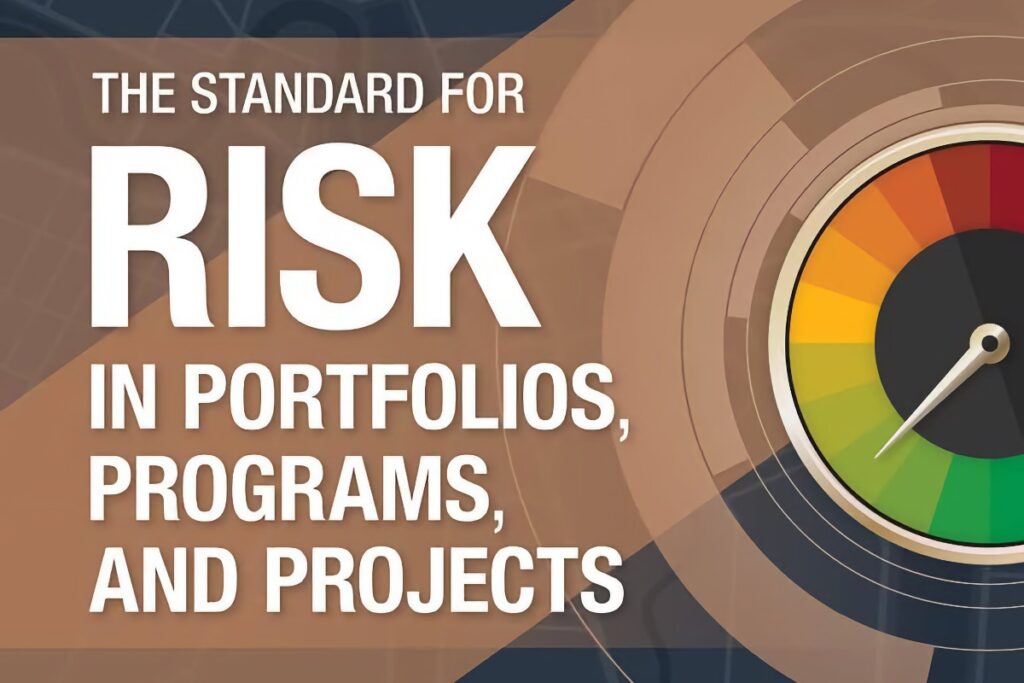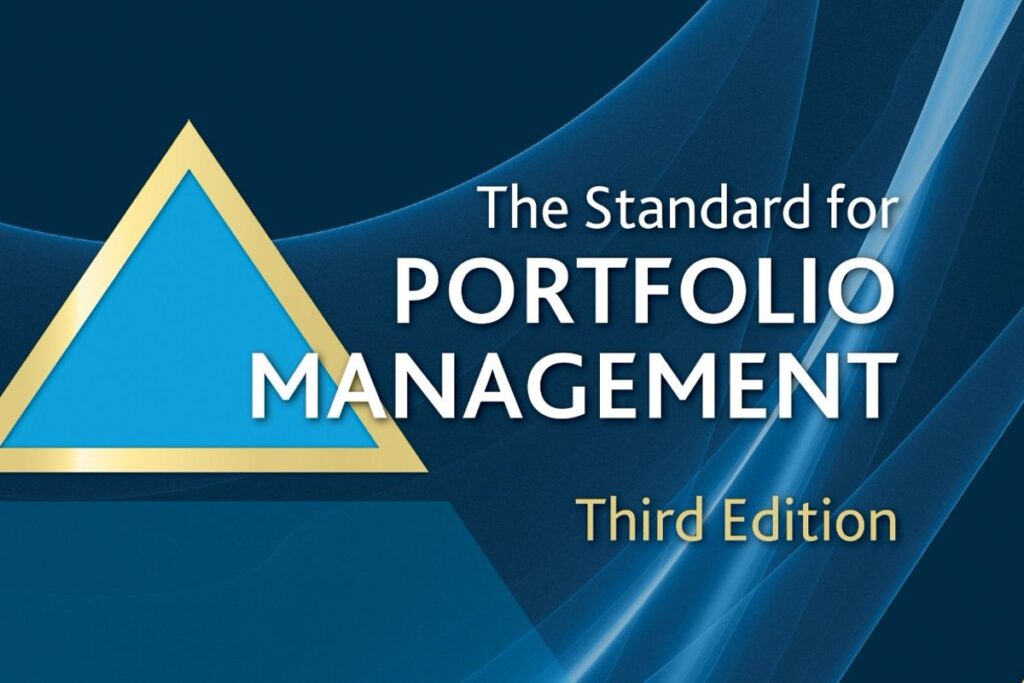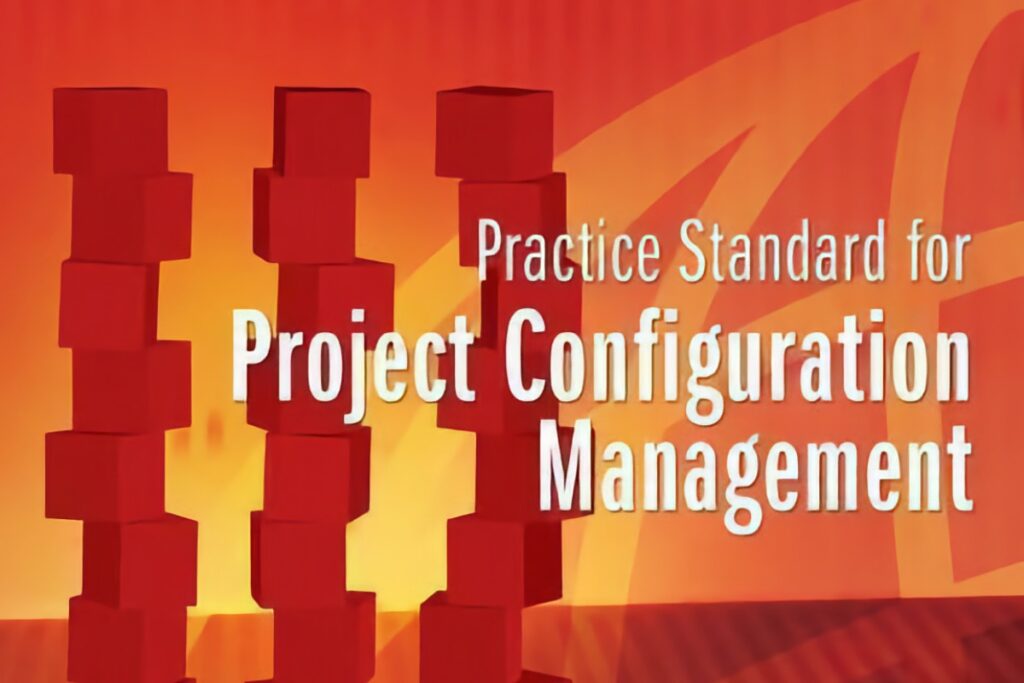In today’s business environment, uncertainty is no longer a peripheral issue—it’s central to strategic planning and delivery. The Project Management Institute (PMI) addresses this reality with its comprehensive guide: The Standard for Risk Management in Portfolios, Programs, and Projects, released in 2019. This standard provides a unified, scalable, and principle-based framework for managing risk across all levels of organizational work.
Whether managing a single project or an enterprise-wide portfolio, this standard offers practical guidance for identifying, analyzing, and responding to risks in alignment with organizational goals.
Scope and Purpose
This standard extends beyond project-level risk and takes a holistic view of risk across the three levels of organizational delivery:
- Project Risk Management: Focused on risks that impact the scope, schedule, cost, or quality of a specific project.
- Program Risk Management: Covers risks arising from interdependencies between projects and program-level benefits realization.
- Portfolio Risk Management: Strategic-level risks that influence overall investment performance and alignment with organizational objectives.
The standard is methodology-neutral and can be used in predictive, agile, and hybrid environments.
Structure and Key Components
The standard is organized into six core principles that are consistent across all three levels of work:
- Risk Exists in All Levels of Work
Risks must be considered at project, program, and portfolio levels to ensure alignment and coherence. - Risk Management is a Shared Responsibility
Risk ownership must be distributed across team members, stakeholders, and governance bodies. - Risk Management Should Align with Organizational Objectives
Risk decisions must support the enterprise’s mission, strategy, and value delivery goals. - Risk is Dynamic and Must Be Monitored Continuously
Risk profiles change, and management approaches must evolve accordingly. - Tailoring Risk Management is Essential
Risk processes should be scaled and adapted to the size, complexity, and nature of the initiative. - A Holistic View Enhances Risk Management
Integrating risk views across work levels leads to better decisions and governance.
Each section is tailored to show how these principles are applied specifically at the project, program, and portfolio levels, along with practical processes and role guidance.
Strengths of the Standard
✅ Enterprise-Wide Perspective
Unlike project-focused guides, this standard addresses risk as a strategic function, not just a project constraint. It recognizes risks that affect benefits realization, value alignment, and organizational resilience.
✅ Consistent Terminology and Principles
Using the same principles across all levels ensures integration, communication, and consistency, which is critical for large organizations with complex governance.
✅ Adaptable to Agile and Hybrid Environments
Although grounded in traditional frameworks, the standard emphasizes adaptability and tailoring, making it usable in fast-moving or iterative contexts.
✅ Supports Risk-Driven Decision Making
The guide moves beyond issue-avoidance and promotes risk as a driver for investment prioritization, resource allocation, and stakeholder engagement.
✅ Clarity in Roles and Responsibilities
It clearly defines roles at each level (e.g., project manager, program manager, portfolio executive), helping organizations build coherent governance models.
Limitations
❌ Conceptual Rather than Tactical
While strong in principles and high-level frameworks, the standard does not provide detailed tools, templates, or techniques. Practitioners may need to supplement it with more hands-on guides or software tools.
❌ Few Real-World Examples
The standard is theory-heavy and lacks illustrative case studies, which could help in real-world application and training.
❌ Requires Organizational Maturity
Its full value is realized only in mature organizations with established governance structures. For newer teams, it might appear abstract or overengineered.
Use Cases
This standard is most effective when used by:
- Portfolio managers and PMOs looking to unify risk approaches across departments.
- Program managers dealing with cross-project interdependencies.
- Project managers seeking to align tactical risk actions with strategic objectives.
- Organizations in regulated or high-risk industries, such as finance, energy, defense, and healthcare.
It is especially useful for building enterprise risk management (ERM) systems that link investment governance, program delivery, and operational execution.
Comparison: Risk Management at Each Level
| Risk Level | Focus | Key Activities | Owner |
|---|---|---|---|
| Project | Deliverables and constraints | Identify, analyze, respond to task-level risks | Project Manager |
| Program | Benefit realization and inter-project risk | Manage dependencies, escalate risks | Program Manager |
| Portfolio | Strategic alignment and investment exposure | Risk appetite, tolerance, prioritization | Portfolio Executive / PMO |
Alignment with PMI’s Value Delivery System
This standard reinforces PMI’s post-2021 shift from deliverable-centric to value-centric thinking, as seen in PMBOK® Seventh Edition and The Standard for Program Management – Fifth Edition. It supports risk-informed value deliveryacross the enterprise, promoting agility, resilience, and long-term sustainability.
Conclusion
The Standard for Risk Management in Portfolios, Programs, and Projects is a mature, scalable guide for implementing a unified risk management strategy across the enterprise. It elevates risk from a project execution task to a strategic governance discipline—one that ensures investment integrity, benefit realization, and organizational agility.
For risk-aware organizations aiming to align uncertainty management with value delivery, this standard provides the principles, structure, and direction needed to thrive in a volatile world.




